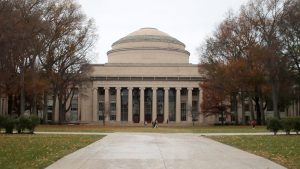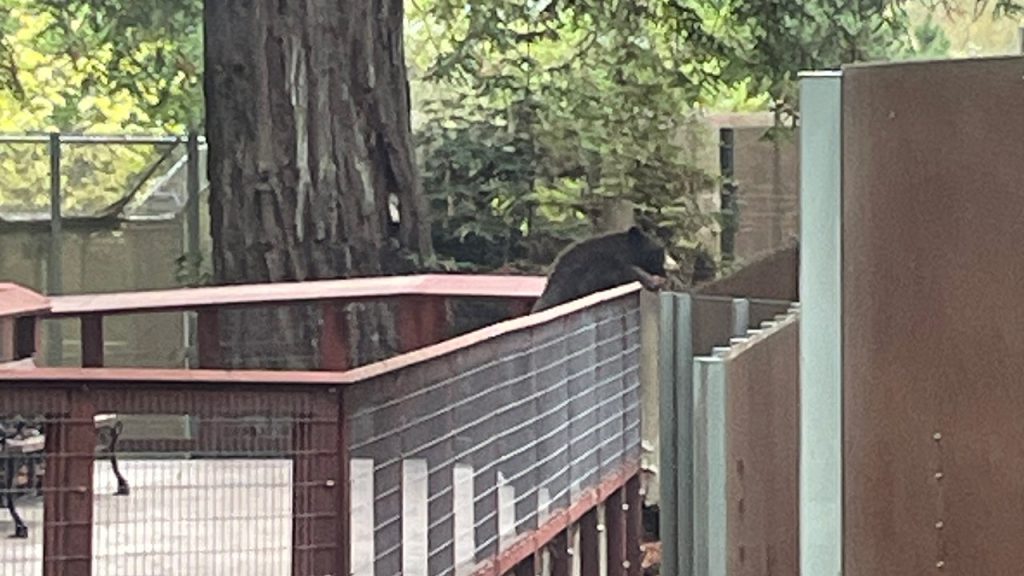A Polite Visitor: Young Black Bear Drops By California Zoo
In a charming encounter that highlights the delicate balance between wilderness and managed wildlife spaces, a young American black bear recently paid an unexpected yet remarkably calm visit to the Sequoia Park Zoo in Eureka, California. The impromptu visit delighted staff who described the approximately 1.5-year-old bear as “very polite” during its brief exploration of the zoo grounds. This young explorer, likely a recently independent cub finding its way in the world, showcased typical adolescent bear behavior when it climbed a tree near the perimeter fence before wandering in from the adjacent 67-acre Sequoia Park forest. The forest has long been home to wild bears, but according to staff who spoke with Fox News Digital, “this is the first to visit our bear family,” making the occurrence both unusual and special. The peaceful nature of the encounter serves as a reminder of how wildlife and human spaces can sometimes overlap in harmonious ways when handled with respect and understanding.
What makes this visit particularly noteworthy was the bear’s remarkably composed demeanor throughout its zoo tour. After entering the grounds, the curious young visitor simply followed its nose, investigating the scents left by the zoo’s resident bears while maintaining a respectful distance from both animal enclosures and human areas. There was no aggression displayed, no disruption to daily operations, and most importantly, no attempt to enter any habitats or public spaces. The bear seemed content to simply satisfy its curiosity about these other bears whose scent it had likely detected from the neighboring forest. When zoo staff recognized the situation and proactively opened a gate to provide a safe exit route, the young bear calmly departed on its own terms, returning to its natural forest habitat without incident or intervention. This peaceful resolution underscores the possibility of coexistence when wildlife encounters are handled with patience and understanding rather than panic.
The Sequoia Park Zoo was quick to emphasize that this encounter should not be interpreted as highlighting any conflict between wild bears and those in captivity, but rather as an example of peaceful coexistence between different populations of the same species. The zoo’s resident bears live in a naturalistic habitat where they can often be seen climbing 200-foot redwoods or swimming in specially designed spaces that mimic their natural environment. These captive bears are not there by accident but were placed under the care of the zoo by the California Department of Fish and Wildlife after being deemed unsuitable for release into the wild. This important distinction helps visitors understand the complex relationship between conservation efforts, wildlife rehabilitation, and the necessity of captive environments for certain individual animals that cannot thrive in the wild due to various circumstances including injury, habituation to humans, or behavioral issues that would compromise their survival.
The zoo has embraced this unexpected visit as an opportunity to reinforce their conservation message. “Our message is all about keeping wild bears wild,” representatives from the Sequoia Park Zoo noted in their statement about the incident. This philosophy guides both their daily operations and their response to unexpected wildlife encounters like this one. The zoo recognizes that such moments “remind us we share space with incredible wildlife — and that respectful distance helps keep them safe.” This perspective acknowledges the responsibility humans bear when living in or near wildlife habitats, emphasizing that coexistence requires awareness, respect, and appropriate boundaries. By maintaining distance and allowing the bear to leave on its own terms rather than attempting to capture or interact with it, the zoo staff demonstrated the principles they advocate for in their educational programs and exhibits.
While no video was captured of the wild bear’s visit, the zoo did release two official photographs that document this rare moment of intersection between managed wildlife spaces and the surrounding natural ecosystem. The images serve as tangible evidence of the bear’s presence and reinforce the zoo’s educational mission by providing a talking point about local wildlife and conservation efforts. Zoo officials also took the opportunity to share important information about black bear behavior, noting that these animals are “generally not aggressive” and typically prefer to avoid contact with humans whenever possible. This educational component helps dispel common misconceptions about bears as inherently dangerous creatures, instead framing them as wild animals deserving of respect and space—animals that will typically choose flight over confrontation when given the opportunity.
This peaceful encounter between a wild bear and a zoological institution dedicated to wildlife conservation serves as a gentle reminder of the complex relationships between humans and wildlife in regions where development borders natural habitats. The young bear’s polite visit to Sequoia Park Zoo demonstrates how even in unexpected situations, wildlife and humans can navigate shared spaces without conflict when proper understanding and respect guide our actions. As human development continues to expand into previously wild areas across North America, such stories highlight the importance of thoughtful design, education, and protocols that acknowledge the presence of wild neighbors. The zoo’s response—allowing the bear to satisfy its curiosity and depart on its own terms—offers a model for how other institutions and communities might approach similar wildlife encounters: with patience, respect, and an appreciation for the remarkable animals with whom we share our increasingly interconnected world.















